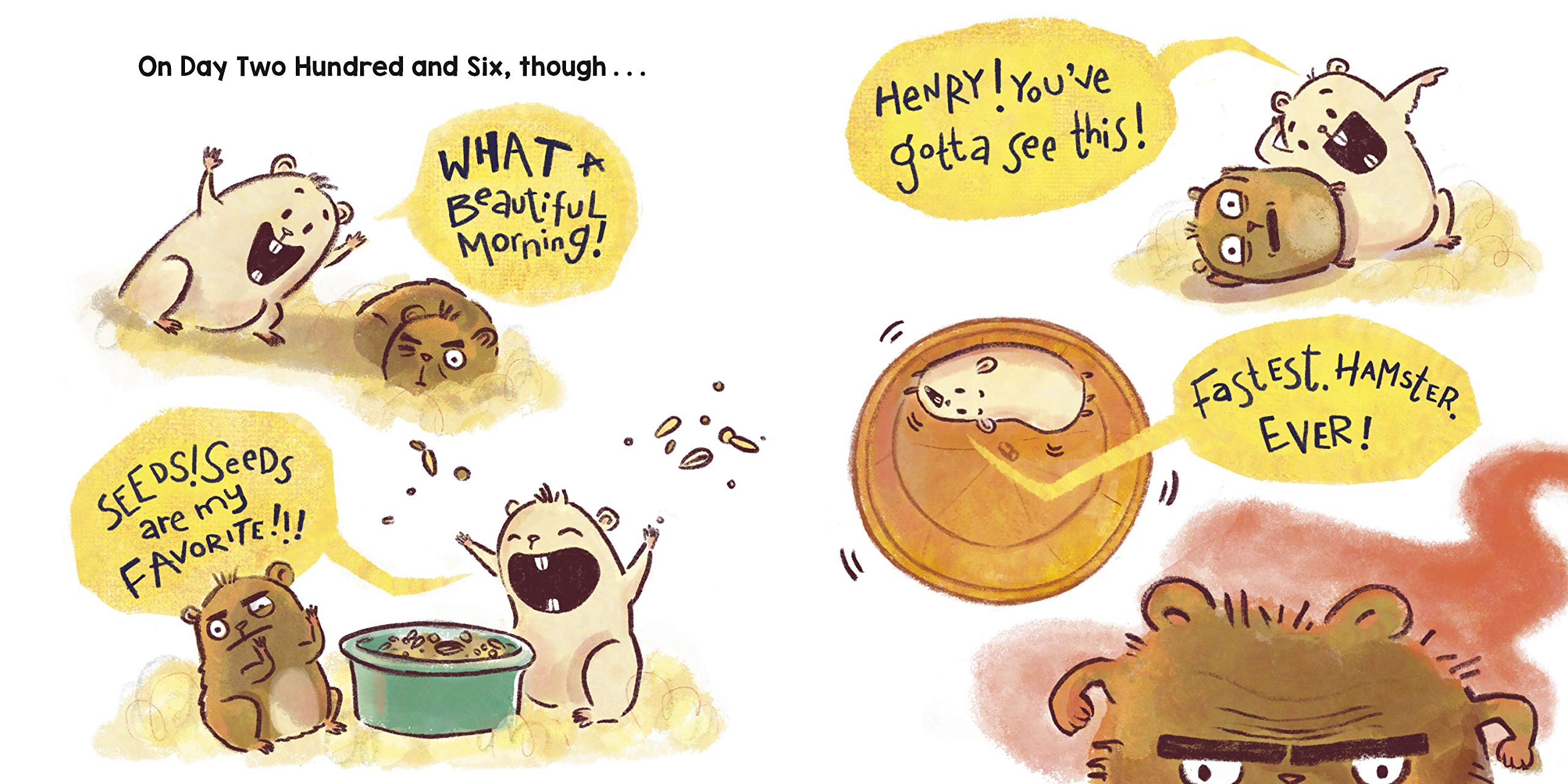12 March 2024
40 pages
—Ryan’s Review of the Writing—
Some books teach. Some books delight. How Do You Eat Color? does both, inviting readers on a sensory journey through a rainbow of foods. Originally published in the Philippines and translated by Karen Llagas, Mabi David’s text transforms something as simple as eating fruits and vegetables into a bright, imaginative experience.
Right from the opening lines, David frames color as something to be savored: “Do you know how red tastes? Does it tickle the tongue?” The text moves like a poem, full of playful repetition and evocative phrasing that encourages readers to think about food in new ways. Colors are seen, yes, but they’re also felt, smelled, and experienced. Green is crisp and fresh in leafy greens, yellow is syrupy sweet in mangoes, and purple sighs into the deep quiet of night. The language invites young readers to slow down and engage with their senses, making the book as much about mindfulness as it is about nutrition.
One of the book’s strengths is how naturally it weaves in food literacy without ever feeling like a lesson. Instead of a straightforward “eat the rainbow” message, David embeds the idea within a day’s journey, letting readers explore colors through time—waking up to the brightness of tomatoes and pineapples, winding down with the earthy comfort of yams and plums. This structure gives the book a gentle rhythm, making it a soothing read-aloud that works well for bedtime or storytime.
Adding to the book’s depth is its robust back matter, which expands on the nutritional and cultural significance of various fruits and vegetables. It introduces young readers to foods they may not be familiar with—moringa, bitter melon, and dragon fruit, among others—while explaining their health benefits and offering ideas on how to try them. There’s also a section on how families can incorporate more plant-based foods into their diets, reinforcing the book’s gentle encouragement toward curiosity and exploration.
If there’s one small area where the book might not connect with every reader, it’s that the experience is more sensory than story-driven. The poetic style is engaging, and the journey through colors is immersive, but some readers may wish for a clearer narrative thread tying the moments together. Rather than following a traditional plot, the book leans into mood and atmosphere, which makes it a rich and inviting read but may leave some younger listeners looking for a bit more structure.
That said, How Do You Eat Color? is a fun celebration of food, culture, and the joy of discovery. Fans of April Pulley Sayre’s Rah, Rah, Radishes! (for its joyful food exploration) will likely appreciate what David has created here. Paired with Yas Doctor’s lush, textured illustrations (which Austin will dive into below), this is a book that encourages kids to engage with food using all their senses—one delectable color at a time.
4.25 out of 5 fruit baskets
—Austin’s Review of the Illustrations—
It seems almost like gilding the lily to describe illustrations that are visual poetry on their own. They really need to be seen to be experienced.
Over the course of 13 incredibly colorful spreads, two young children and a friendly chameleon explore landscapes of giant fruit and veg that are as delicious to look at as it is implied they taste.
A landscape of house-sized pineapples as far as the eye can see, mangondolas, and regiments of carrots. A citrus sunset, a garlic clove clutch and plum pillows.
Especially fun is the fact that, since this book originated in the Philippines, the selection of edibles includes options not often featured in American children’s books. Dragon fruit, red beans, hibiscus and rambutan all make an appearance.
It’s a figurative turn for artist Yas Doctor, whose Instagram features more abstract work in a fine art vein. It’s definitely worth exploring if you like the watercolor washes and whimsical cartooning.
Yas Doctor’s bio in the jacket describes a love of gardening, and that clearly translates to the lavishly textural treatment of the plant matter that populates each of these artworks.
There is objective work—line art and kinetic shapes—to be seen in her online portfolio @heypatatas, as interesting and conceptual as the work in the book. It’s easy to see why she was a good choice for the project.
Nothing in that catalog, however, suggests the kind of horticultural focus and variety of palette we see displayed in How Do You Eat Color? We can be glad she had the opportunity to explore this medium and creative brief, too.
Aimed at very young readers—think Very Hungry Caterpillar—How Do You Eat Color? makes an equally valid scientific observation: fruits that are especially colorful and pleasing to the eye are also the most nutrient rich and healthful.
The point is made that a variety of multicolored plant life on your plate is more than aesthetically appealing, it’s a good nutritional strategy too.
Also that if you live in an incredibly colorful landscape, a chameleon capable of reflecting it makes an especially beautiful pet.
Your little one will no doubt be entranced by the imaginative world of How Do You Eat Color? and perhaps enticed to eat their vegetables, too!
4 out of 5 melon moons

Most recently, he illustrated graphic novel Tales of Mr. Rhee vol. 5: Rockstar Paranoia, and wrote and illustrated RIOT Force: Tools of the Rich, a creator-owned graphic novel, both for Source Point Press.




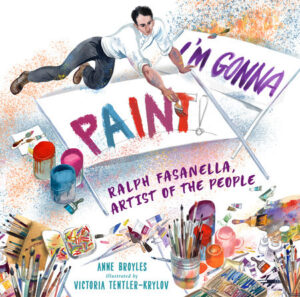
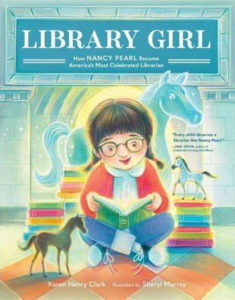
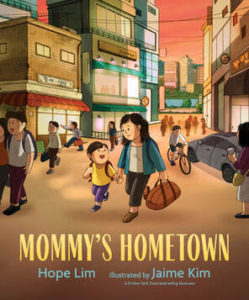
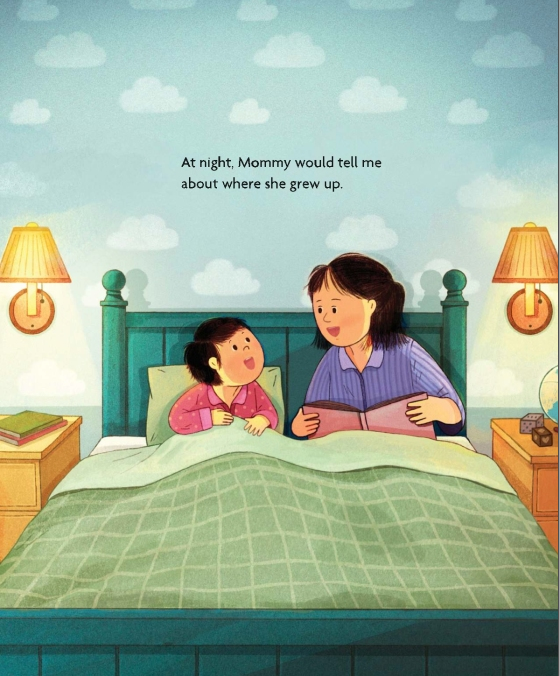 Every night at home, as part of their bedtime routine, the mother paints vivid pictures of her memories for her son. “She and her friends would walk to the river and play there all day. They caught fish, unearthed treasures beneath rocks, splashed each other, and dried themselves on the pebbled riverbank.” As a boy, I dreamed about where my family members grew up, and even today, I still do this with my friends living abroad, creating colorful images in my mind. When a story tugs at your memories, you know you’re in for a treat.
Every night at home, as part of their bedtime routine, the mother paints vivid pictures of her memories for her son. “She and her friends would walk to the river and play there all day. They caught fish, unearthed treasures beneath rocks, splashed each other, and dried themselves on the pebbled riverbank.” As a boy, I dreamed about where my family members grew up, and even today, I still do this with my friends living abroad, creating colorful images in my mind. When a story tugs at your memories, you know you’re in for a treat. Joshua Walls is a children’s author and travel writer who isn’t afraid to fuse, challenge, or deconstruct genres in the pursuit of creating compelling stories. Currently, he lives in Sarasota,
Joshua Walls is a children’s author and travel writer who isn’t afraid to fuse, challenge, or deconstruct genres in the pursuit of creating compelling stories. Currently, he lives in Sarasota, 
